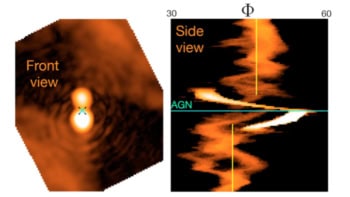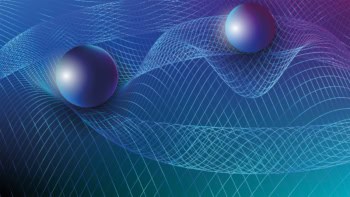A team of American and Dutch physicists has discovered the earliest and most distant active galactic nucleus. The result has important implications for the early history of the universe. Astronomers currently believe that super-massive black holes form at the centre of galaxies. However, in the early universe there would not have been enough time for such black holes to form according to existing models of galaxy formation. The new results suggest instead that primordial black holes - formed at the beginning of the universe - may have merged together to form a proto-galactic nucleus. These proto-nuclei would have gradually attracted enough gas and dust to form the early galaxies. TN J0924-2201 – at 9 percent the age of the universe and - is a prime candidate to confirm this theory (The Astrophysical Journal June 20).
Galactic nuclei outdistances quasars
13 May 1999



